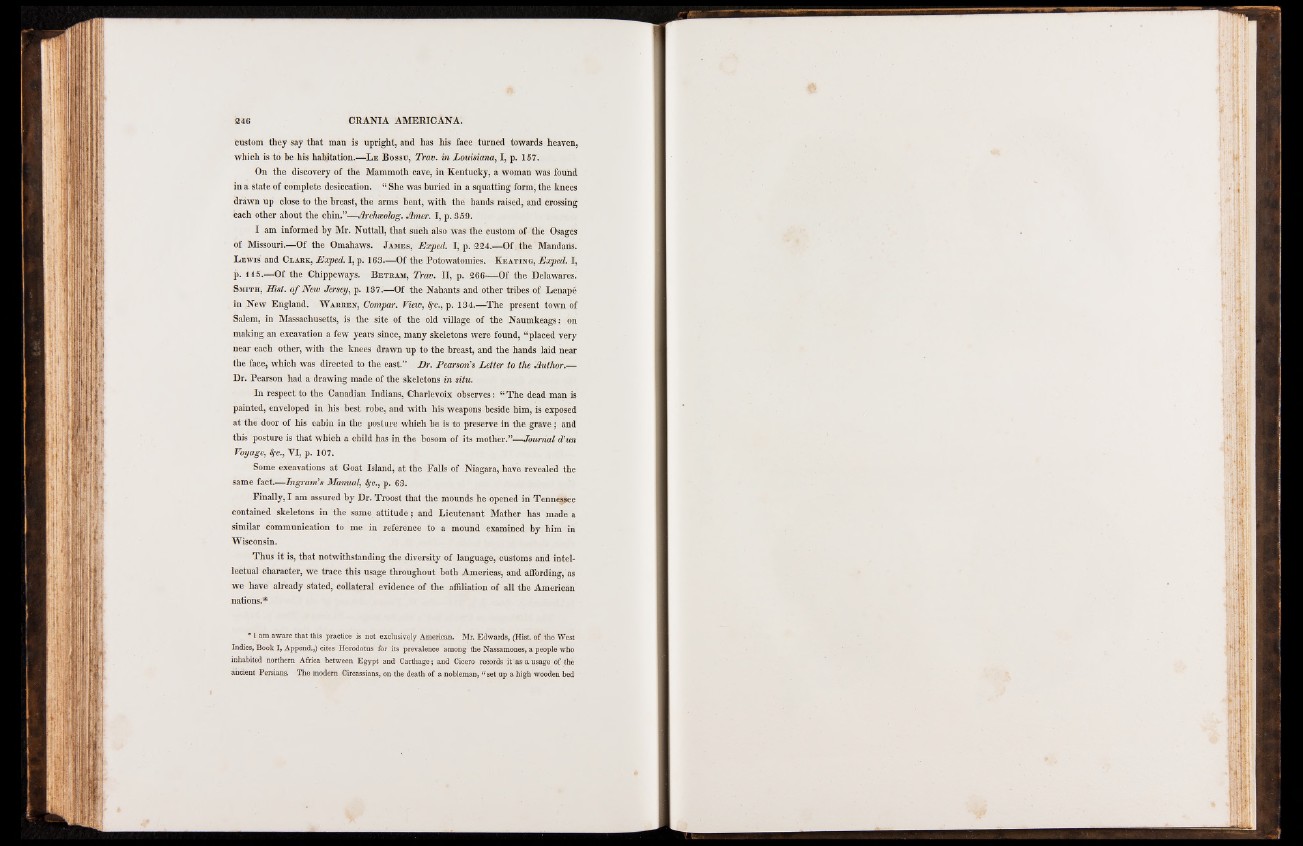
custom they say that man is upright, and has his face turned towards heaven,
which is to be.his habitation.—L e B oss?, Trav. in Louisiana, I, p. 157.
On the discovery of the Mammoth cave, in Kentucky, a woman was found
in a state of complete desiccation. “ She was buried in a squatting form, the knees
drawn up close to the breast, the arms bent, with the hands raised, and crossing
ieach other about the chin.”—Archseolog. Amer. I, p. 359.
I am informed by Mr. Nuttall, that such also was the custom of the Osages
of Missouri.—Of the Omahaws. J ames, Exped. I, p. 224.—Of the Mandaris.
L ewis and Clark, Exped. I, p. 163.—Of the Potowatomies. Keating, Exped. I,
p. 115.—Of the Chippeways. Betram, Trav. II, p. 266— Of the Delawares.
Smith, Hist, o f New Jersey, p. 137.—Of the Nahants and other tribes of Lenape
in .New England. Warren, Compar. View, §c., p. 134.—The present town of
Salem, in Massachusetts, is the site of the old village of the Naumkeags: on
making an excavation a few years since, many skeletons were found, “placed very
near each other, with the knees drawn up to the breast, and the hands laid near
the face, which was directed to the east.” Hr. Pearson’s Letter to the Author.—
Dr. Pearson had a drawing made of the skeletons in situ.
In respect to the Canadian Indians, Charlevoix observes: “ The dead man is
painted, enveloped in his best robe, and with his weapons beside him, is exposed
at the door of his cabin in the posture which be is to preserve in the grave; and
this posture is that which a child has in the bosom of its mother.”—Journal d’un
Voyage, fyc., VI, p. 107.
Some excavations at Goat Island, at the Falls of Niagara, have revealed the
same fact.—Ingram’s Manual, fyc., p. 63.
Finally, I am assured by Dr. Troost that the mounds he opened in Tennessee
contained skeletons in the same attitude; and Lieutenant Mather has made a
similar communication to me in reference to a mound examined by him in
Wisconsin.
Thus it is, that notwithstanding the diversity of language, customs and intellectual
character, we trace this usage throughout both Americas, and affording, as
we have already stated, collateral evidence of the affiliation of all the American
nations.*
* I am aware that this practice is not exclusively American. Mr. Edwards, (Hist, of the West
Indies, Book I, Append.,) cites Herodotus for its prevalence among the Nassamones, a people who
inhabited northern Africa between Egypt and Carthage; and Cicero records it as a usage of the
ancient Persians. The modem Circassians, on the death of a nobleman, "set up a high wooden bed